
Fife is a council area, historic county, registration county and lieutenancy area of Scotland. It is situated between the Firth of Tay and the Firth of Forth, with inland boundaries with Perth and Kinross and Clackmannanshire. By custom it is widely held to have been one of the major Pictish kingdoms, known as Fib, and is still commonly known as the Kingdom of Fife within Scotland. A person from Fife is known as a Fifer. In older documents the county was very occasionally known by the anglicisation Fifeshire.

Kirkcaldy is a town and former royal burgh in Fife, on the east coast of Scotland. It is about 11.6 miles (19 km) north of Edinburgh and 27.6 miles (44 km) south-southwest of Dundee. The town had a recorded population of 49,460 in 2011, making it Fife's second-largest settlement and the 11th most populous settlement in Scotland.
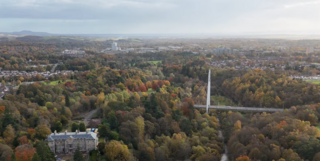
Glenrothes is a town situated in the heart of Fife, in east-central Scotland. It had a population of 39,277 in the 2011 census, making it the third largest settlement in Fife and the 18th most populous locality in Scotland. Glenrothes is the administrative capital of Fife, containing the headquarters of both Fife Council and Police Scotland Fife Division and is a major service centre within the area.
Leven is a seaside town in Fife, set in the east Central Lowlands of Scotland. It lies on the coast of the Firth of Forth at the mouth of the River Leven, 8.1 miles (13.0 km) north-east of the town of Kirkcaldy and 6.4 miles (10.3 km) east of Glenrothes.
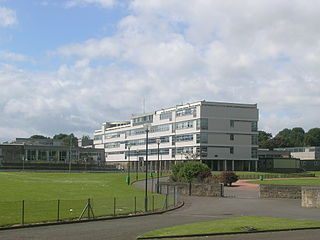
Balwearie High School is a non-denominational comprehensive secondary school at the west end of Kirkcaldy in Scotland. Balwearie serves around 1600 pupils aged from 11 to 18 and includes a Department of Additional Support for children with Additional Support Needs.

Glenrothes is a constituency in Scotland represented in the House of Commons of the UK Parliament since 2005.

Ladybank is a village and former burgh of Fife, Scotland. It is about 62 kilometres (39 mi) north of Edinburgh, 8 kilometres (5.0 mi) southwest of Cupar, close to the River Eden. Its 2006 population was estimated at 1,582.

Markinch is both a village and a parish in the heart of Fife, Scotland. According to an estimate taken in 2008, the village has a population of 2,420. The civil parish had a population of 16,530. Markinch is east of Fife's administrative centre, Glenrothes and preceded Cupar as Fife's place of warranty and justice prior to the 13th century.
Levenmouth is a conurbation comprising a network of settlements on the north side of the Firth of Forth, in Fife on the east coast of Scotland. It consists of three principal coastal towns; Leven, Buckhaven, and Methil, and a number of villages and hamlets inland. The industrial towns of Buckhaven and Methil lie on the west bank of the River Leven, and the resort town of Leven is on the east bank. The "Bawbee Bridge" links the two sides of the river. Historically, Buckhaven and Methil were joined together as one burgh, while Leven was separate. The area had an estimated population of 37,238 in 2006.

Coaltown of Balgonie is a village of 1,059 people in south central Fife. It is located on the B9130 road, next to the new town of Glenrothes. Coaltown has a premier shop, a pub, the Balgonie Arms, a bowling green, Balgonie Bowling Club, a village hall, the Victoria Hall, an undertakers, and a garage, Balgonie Motors. There is a playpark for children beside the primary school. Opposite the school is the football pitch for local team, Balgonie Scotia AFC.
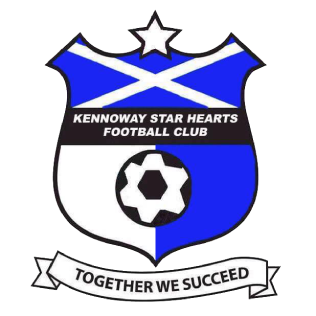
Kennoway Star Hearts Football Club are a football club from the village of Star near Kennoway in Fife, Scotland. Currently competing in the East of Scotland League Second Division, the club play their home games at Treaton Park.

Leslie is a large village and parish on the northern tip of the River Leven Valley, to the west of Glenrothes in Fife. According to the population estimates (2006), the village has a population of 3,092. The village was granted burgh of barony status by James II in 1458 for George Leslie who became the first Earl of Rothes. Later, this was upgraded to a police burgh in 1865.

Kirkcaldy was a local government district in the Fife region of Scotland from 1975 to 1996. The district was named after the town of Kirkcaldy but also covered a wider area, including the Fife regional capital of Glenrothes.
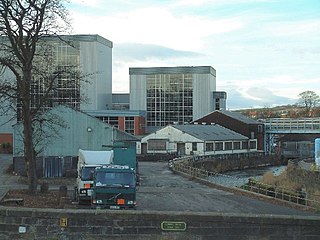
Windygates is a small village and surrounding district in central Fife, Scotland.
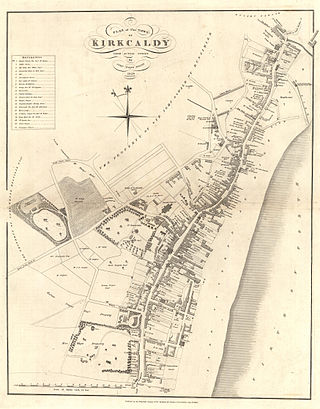
Kirkcaldy is a former royal burgh and town. Known as one of Scotland's "most ancient burghs", the area surrounding the modern town has a history dating as far back as between 2500 BC and 500 BC as a possible funerary landscape.
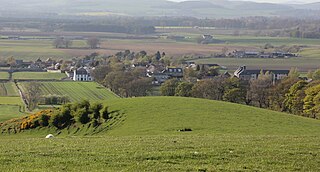
Pitlessie is a small village in Cults, Fife, Scotland. It is roughly 4+1⁄2 miles (7 km) southwest of the nearest large town, Cupar, and 23 miles north of Edinburgh. It had an estimated population of 325 in 2010.

Scoonie is a settlement and parish in Fife, Scotland, the parish contains the town of Leven. It is bordered on the north by the parishes of Kettle and Ceres, on the east by the parish of Largo, on the south by the parishes of Markinch and Wemyss, and on the west by the parishes of Markinch and Kennoway. It extends about 4+1⁄2 miles north to south. Its width varies between 5⁄8 and 2+3⁄4 mi . The parish is on the coast of the Firth of Forth, with a coastline of about 1+1⁄2 mi (2.4 km) The area of the parish is 4,107 acres.

Elections to Fife Council took place on 5 May 2022 on the same day as the 31 other Scottish local government elections. As with other Scottish council elections, it was held using single transferable vote (STV) – a form of proportional representation – in which multiple candidates are elected in each ward and voters rank candidates in order of preference.
















